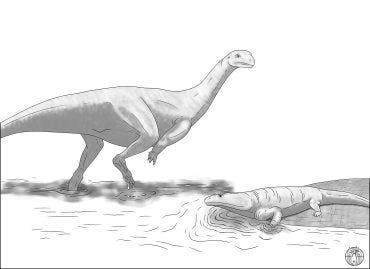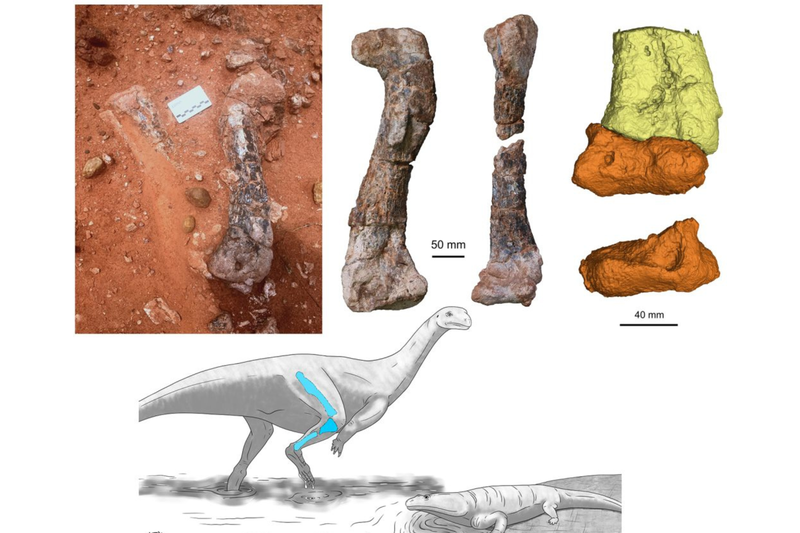
NEW YORK (1010 WINS/WCBS 880) – An assistant professor at Stony Brook University on Long Island helped identify a new dinosaur in Zimbabwe and published a study highlighting the discovery, which paves the way for further paleontological research in the region, according to a press release on Tuesday.
A new sauropodomorph named Musankwa sanyatiensis, a long-necked herbivorous dinosaur, was discovered and identified by an international team of scientists after leaving behind a single hind leg, including its thigh, shin, and ankle bones.
“Despite the limited fossil material, these bones possess unique features that distinguish them from those of other dinosaurs living at the same time,” Kimberley (Kimi) Chapelle, PhD, Assistant Professor in the Department of Anatomical Sciences in the Renaissance School of Medicine at Stony Brook University said in a statement.
Sauropodomorphs were mainly bipedal dinosaurs that lived around 210 million years ago in the Late Triassic. This is only the fourth dinosaur species discovered in Zimbabwe. The fossil follows only these previous dinosaur discoveries in the region: “Syntarsus” rhodesiensis in 1969, Vulcanodon karibaensis in 1972, and, Mbiresaurus raathi in 2022.
“It lived 210 million years ago, Chapelle told WCBS 880. “It walks on two legs. It has a long neck, small head, it eats plants and it weighs about 400 pounds.
Chapelle also said she’s very excited for everyone, especially Children to learn about it.
“If you ask kids what their favorite dinosaur is, a lot of the time it will be something like T-rex or Brontosaurus. I really like seeing other dinosaurs, especially Southern African dinosaurs,” she added.
Originally discovered in 2018, the dinosaur was named after the houseboat “Musankwa,” which in the Tonga dialect means “boy close to marriage.”
The study was led by Professor Paul Barrett from the Natural History Museum of London and co-authored by Chapelle from Stony Brook University and researchers from Wits University in South Africa and the Natural History Museum of Zimbabwe, described the fossil and details about the dinosaur was published in Acta Palaeontologica Polonica.

Scientists found that Musankwa sanyatiensis weighed around 390 kilograms (about 850 pounds). It was one of the larger dinosaurs of its time and mostly lived in swamp areas.
Chapelle helped process the micro-CT scan of the fossil and did the digital reconstructions. She then assisted in describing the dinosaur and determining its position on the dinosaur family tree through phylogenetic analysis.
“Based on where it sits on the dinosaur family tree, Musanwka sanyantiensis is the first dinosaur of its kind from Zimbabwe,” Chapelle said. “It, therefore, highlights the potential of the region for further paleontological discoveries.”
The authors believe that as more fossil sites are explored and excavated, there is hope for uncovering further significant finds in Zimbabwe and other regions that will shed light on the early evolution of dinosaurs and the ecosystems they inhabited.
